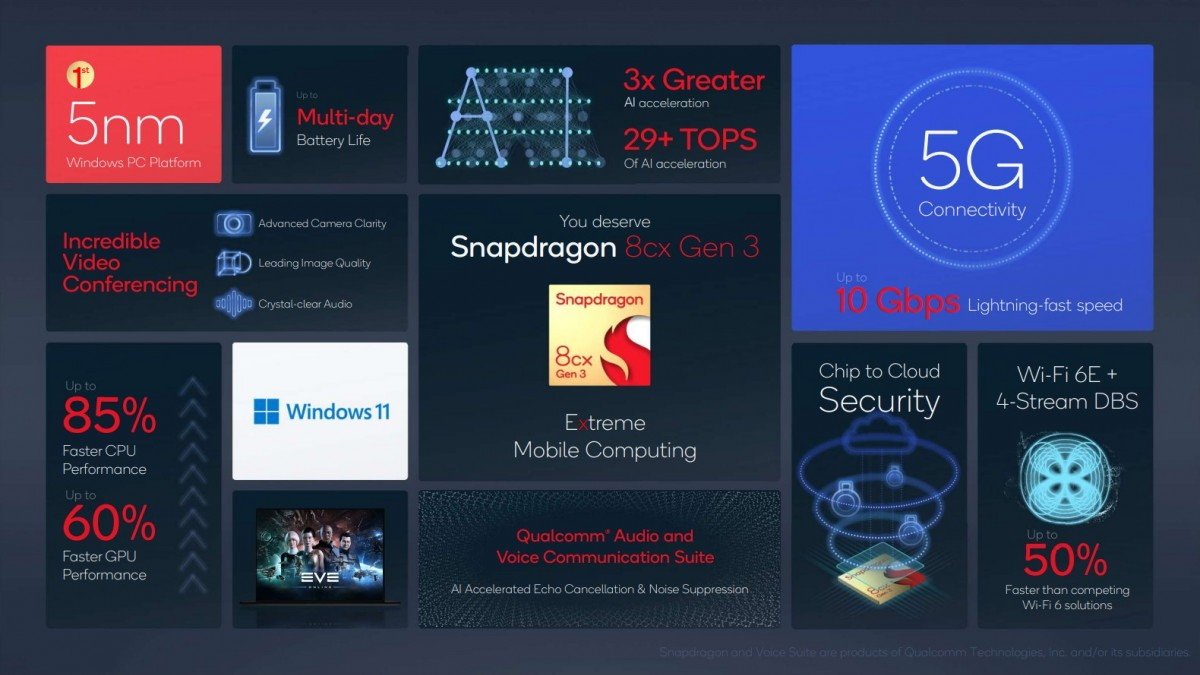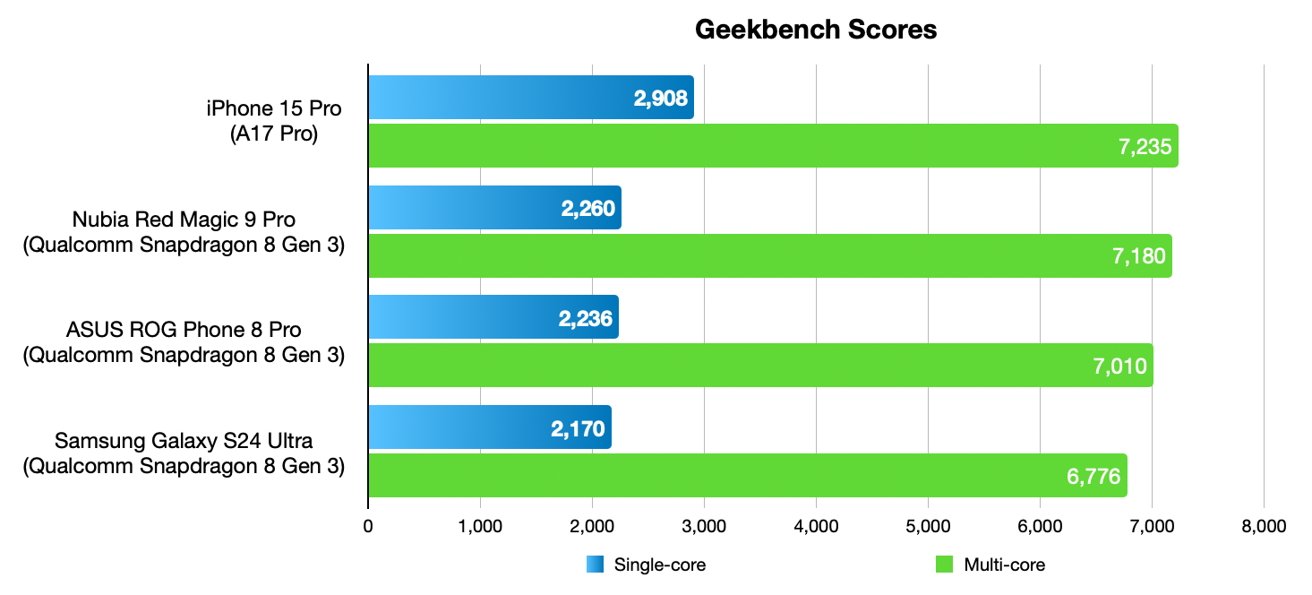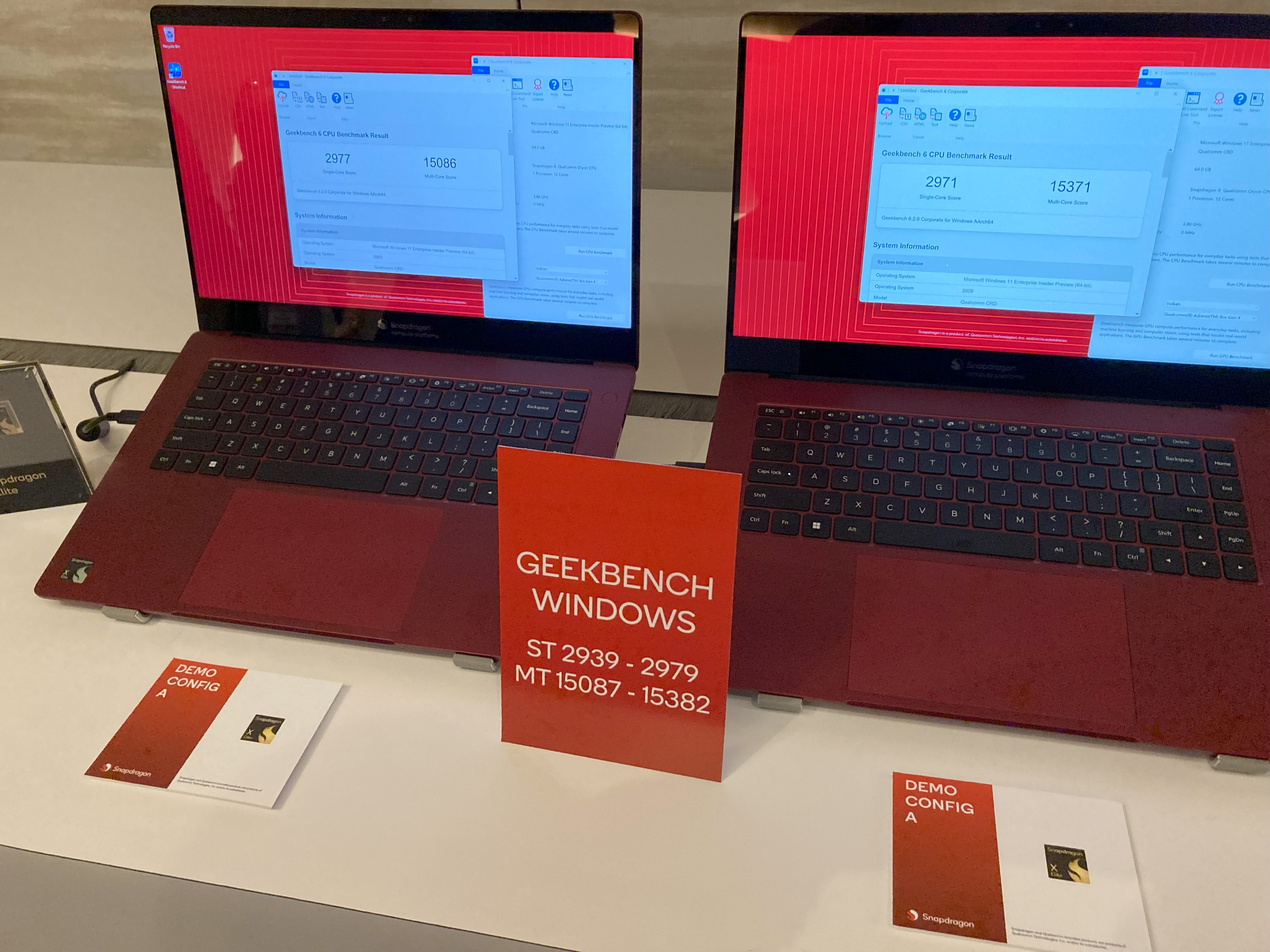KITA
About
- Username
- KITA
- Joined
- Visits
- 127
- Last Active
- Roles
- member
- Points
- 1,479
- Badges
- 0
- Posts
- 410
Reactions
-
AI computer showdown - MacBook Air vs. Microsoft Surface Laptop Copilot+ PC
On paper, for the NPU performance of each SoC:saarek said:“AI computer showdown”.So which one of them is actually better at processing ML/AI? Surely that should be the primary focus based on the title?
Snapdragon X Plus - 45 TOPS (INT8)
Snapdragon X Elite - 45 TOPS (INT8)
Apple M3 - 18 TOPS (FP16)
Apple M4 - 38 TOPS (INT8)



-
AI computer showdown - MacBook Air vs. Microsoft Surface Laptop Copilot+ PC
Surface Laptop 15" is $1299 for Snapdragon X Elite with 16 GB RAM and 256 GB SSDy2an said:Given the Surface has a fan, why compare it to the MacBook Airs rather than the MacBook Pros?
MacBook Air 15" is $1299 for M3 with 8 GB RAM and 256 GB SSD
MacBook Pro 16" is $2499 for M3 Pro with 18 GB RAM and 512 GB SSD
-
Surface Laptop 13" is $999 for Snapdragon X Plus with 16 GB RAM and 256 GB SSD
Macbook Air 13" is $1099 for M3 with 8 GB RAM and 256 GB SSD
Macbook Pro 14" is $1599 for M3 with 8 GB RAM and 512 GB SSD


-
Alleged M4 benchmarks verify Apple's iPad Pro performance claims
Apple has done some impressive things on the machine learning front it seems for the M4 CPU.
Apple M3 (Mac) vs Apple M4 (iPad Pro):
https://browser.geekbench.com/v6/cpu/compare/6017019?baseline=6016039
Essentially double for Object Detection has massively boosted their overall score. Background Blur also seeing significant gains:





-
New iPad Pro rumored to debut with M4 chip
Marvin said:
When they say they have a market-leading ARM chip by comparing a much higher TDP chip to Apple's lowest one, that's lying.blastdoor said:
I bet they aren’t “lying” to the extent semi accurate claims.danvm said:
From what I know, it's just one report that claim that Qualcomm is lying. The second link you posted makes reference to the www.semiaccurate.com article. I'm looking forward seeing what the real results are. Based in recent benchmarks, most results have been positive. We'll see what happens.Marvin said:
According to recent reports, they were lying:blastdoor said:
We’ll see… the M1 Pro beats the m3 on multithreaded benchmarks. And if Apple had been willing to overclock a single core on the m1, it might have been able to match the m3 on bursty single core benchmarks too. But an M1 Pro uses a lot more power and requires more cooling.narwhal said:Qualcomm and Microsoft will debut Snapdragon X Elite Windows laptops in May that they claim match the specs of a base model M3. I suspect Apple wants to release a faster iPad before then to take a bit of wind from their sails.So if all they’ve done is create something equivalent to an M1 Pro, then they are still behind Apple (and really no better than Intel).
https://www.semiaccurate.com/2024/04/24/qualcomm-is-cheating-on-their-snapdragon-x-elite-pro-benchmarks/
https://www.tomshardware.com/tech-industry/qualcomm-faces-benchmark-cheating-allegations-snapdragon-x-eliteplus-benchmarks-claimed-to-be-fraudulent
OEMs got less than half the performance they claimed. They are also being sued by ARM over their license.But I suspect they are misleading in the sense I described, in which they compare a chip with transistor counts and thermals more like an m1pro (or m2pro) to a vanilla m3.
Their TDP for the Elite chip is 80W, which is Max-level power usage.
Benchmarks for GFXBench Aztec Normal offscreen:
Snapdragon X Plus = 136FPS (~25W)
Snapdragon X Elite = 312FPS (up to 80W)
M3 = 323FPS (20W)
M3 Pro = 579FPS (30W)
M3 Max = 867FPS (60W)
Baldur's Gate 3 test, they show the Elite running at 30-40FPS, M3 Max can run this at 90FPS.
Their Plus chip is half M3 and their Max power chip is performing like M3. Their own performance-per-watt tests showed 50-60% better than Intel. Apple is 4-5x better than Intel on performance-per-watt.
This is the kind of thing Intel does where they put more CPU cores in, ramp up the power usage then compare it to Apple's weakest fanless chips.
Snapdragon chips will be competitive with entry-level Intel notebooks but so is a potato. It's well behind even last-gen Pro Macs and Apple will soon launch their next-gen version.
From Anandtech (Oct. 2023)
"Thin and Light" version has a 23W TDP:
Also, I find it odd that they're showing off old smartphone benchmarks anyways.
NUVIA cores aside, Qualcomm tends to have pretty good graphics for their SoCs:
Solar Bay tests modern graphics features such as ray tracing - the peak score of the Snapdragon 8 Gen 3 (smartphone SoC) is close behind the Apple M2.
-
The history -- and triumph -- of Arm and Apple Silicon
Way to leave out graphics performance:AppleInsider said:Credit should be given to other chipmakers who have made heroic efforts -- albeit not entirely successful -- to catch up. Qualcomm, for example, has brought out the Snapdragon 8 Gen 3, which aims to take on the A17 Pro used in the iPhone 15 Pro and Pro Max.

The A17 Pro and M3's nearest current competition: Qualcomm's Snapdragon 8 Gen 3
This is fine, except for the fact that the iPhone 16 will be coming out in the fall, with a new chip that will likely continue the now-tradition of double-digit increases. In particular, we'll note that GPU performance in the M3 has increased 50 percent over the M1 in just three years.
Apple's other big advantage, especially in portable devices is energy efficiency which leads to world-beating battery life.
The Snapdragon 8 Gen 3 features seven CPU cores with a mix of performance and efficiency cores, similar to Apple's approach. Snapdragon 8 Gen 3's graphics are handled by the Adreno 750 GPU.
The improvement in the Snapdragon chip from its predecessor is truly impressive. But, in post-release benchmarks, Qualcomm's so-called Apple-beater doesn't quite live up to the hype.
Geekbench benchmark results for the iPhone 15 Pro and smartphones using the Snapdragon 8 Gen 3
Geekbench single-core and multi-core results for new devices like the Nubia Red Magic 9 Pro, the ASUS ROG Phone 8 Pro, and the Samsung Galaxy S24 Ultra get close to what the A17 Pro offers in terms of single-core and multi-core processing. Except "close" is not good enough.
3DMark Solar Bay tests some of the latest graphics features such as ray tracing.
I'd also add that Qualcomm hasn't included their NUVIA cores (Oryon) yet either. These will be in both their upcoming Snapdragon X Elite (laptops) and Snapdragon 8 Gen 4 (smartphones).
They already close the gap with Apple by a good margin (shown Oct 2023):

